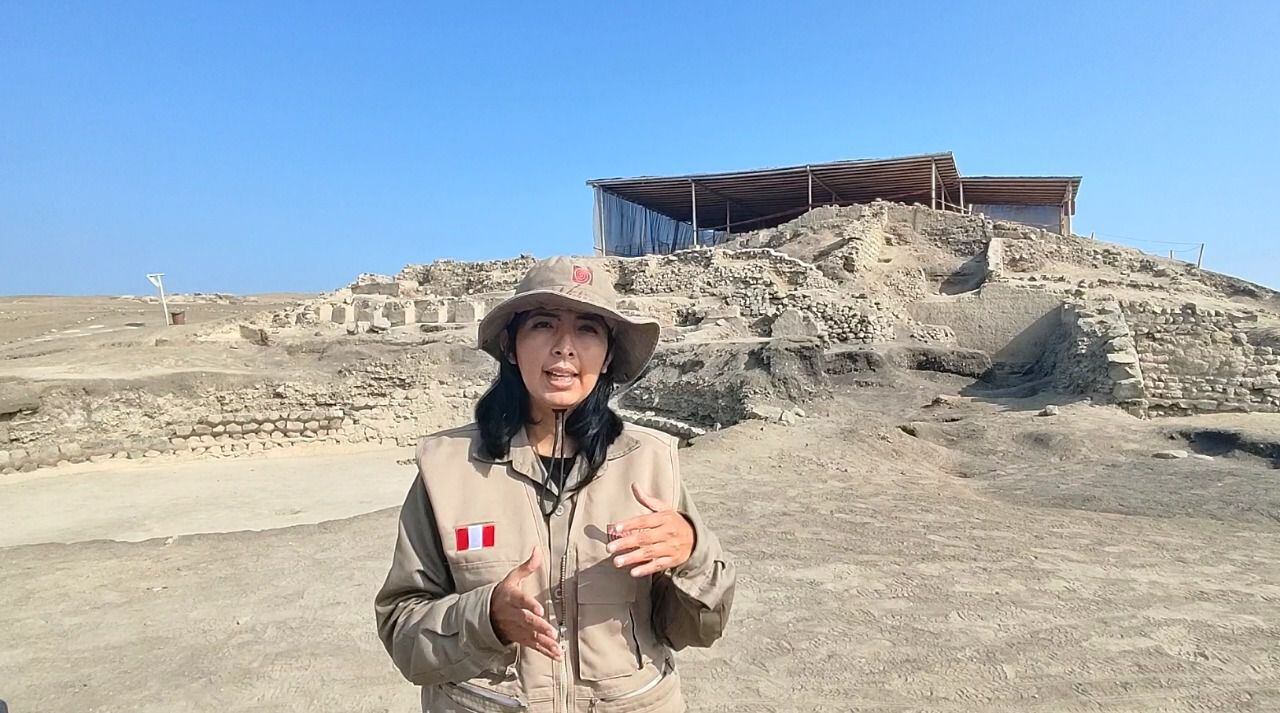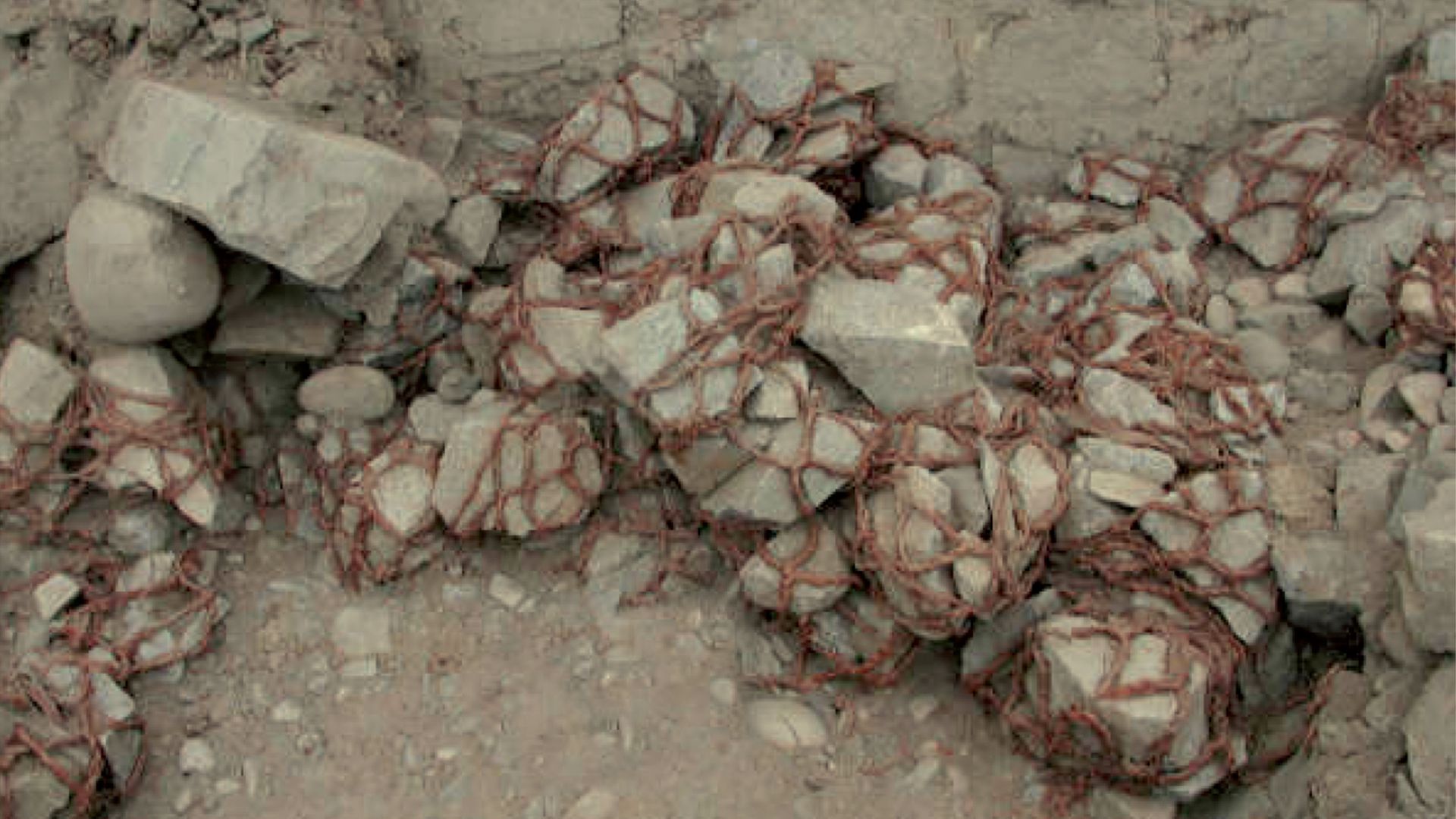Last May 12, at 4:55 pm, a strong telluric movement of magnitude 5.5 surprised the people of Lima, leaving several injured and material damage. Even a few days later a girl passed away who had been seriously injured after suffering a fall during the earthquake. That same month other tremors were felt throughout the national territory.
But, despite the scare experienced, an earthquake is not something new in our country. The ancient Peruvians knew this problem very well and to face it they developed a technology to reduce the damage. This is the case of the Shicra, a technique that is over five thousand years old and survives to this day.
READ ALSO: Quantum computer achieves in 36 microseconds what a classical computer can do in 9,000 years
It is a type of woven bag based on vegetable fiber (junco, cabuya or totora) that contains a large quantity of stones or mortar, a bag that was discovered in Caral, one of the oldest civilizations in the world.
“If they had only put stones, it would have caused more weight and the platforms, which are retaining walls filled with stone, would have collapsed,” explains Tatiana Abad, archaeologist from the Caral Archaeological Zone, about the importance of the technique that they developed.
READ ALSO: We tested Google’s artificial intelligence that trains you for job interviews and this is our verdict
In dialogue with Tradethe specialist commented that the evolution of the shicra goes from the Initial Formative to the Early Formative, that is, from 3,000 years BC to 1,800 years BC In addition, remains of these bags have been found in the archaeological sites of Caral, Supe, Huaura , Vichama, Áspero, among others on the coast of Peru.
“In general, the bags are 50 cm. to 70 cm., but in Vichama what we call ‘Mega Shicra’ have been reported, which are large, weighing 500 kilos to a ton, and are two meters in diameter. They are a little later than those of Caral, but they have the same concept”, details Abad.
READ ALSO: How many electric cars are already circulating in Peru? Guide to understand this technology
How did the shicra work?
The ancient Peruvians used the shicra as bags of stones that were placed inside superimposed platforms, during the construction of their most important enclosures.
“Then, the wall is built and they are placed (the shicras) tying them with mortar and, being vegetable fiber and having elasticity, they move and generate a tension that moves along with the structure and does not cause it to collapse,” he says. the archaeologist about the operation of this technique in Caral
And how did they invent this technology?
For Abad, the civilization of Caral shows us that they had clear knowledge of astronomy and geometry. They had developed construction techniques to have circular plazas and were able to keep the fire inside their enclosures with ducts. “Apparently, as a result of practice and error, they have learned, because there are spare parts,” he said about the shicra. Furthermore, each of these bags was not placed arbitrarily. They maintain a certain order to achieve the necessary stability.

In this sense, engineer Álvaro Rubiños, who participated in the Caral investigations, commented to this Daily that “this technology founded the principles of earthquake resistance in the constructions of Peru that followed it”.
The professor at the Pontifical Catholic University of Peru (PUCP) recalled that in 2011 the first investigations on the shicra were carried out in the La Galería pyramid, which is the third largest in the complex. The function was to create “self-supporting cores” and “although it is true that the walls could fall and be repaired, the cores remained stable”.
READ ALSO: Goodbye to toxic relationships: Apple announces a new function to remove access to people in a matter of seconds
a chance today
Now, is it possible to use the shicra again today? For Rubiños it is a matter of research and the reality is that the technology developed by the ancient Peruvians survives in other types of techniques.
“Actually, it has been done, but no longer with vegetable fiber. It has been done in two ways. One is the gabions: they are not bags, but they are steel mesh filled with stones. They are basically the same idea of containing a large volume of stones that due to their weight is stable. In addition, shicras have been used on the foundations of constructions”, Rubiños tells us.

He also recalled that in 2016 the PUCP carried out some research on rural adobe constructions, but no longer based on vegetable fiber. Polymers or steel were chosen. “Just as it was found in Caral, it would no longer be feasible since there are much more resistant elements,” he pointed out. In addition, Tatiana Abad added that engineers from the National University of Engineering and scientists from Japan have investigated the ability of the shicra to resist earthquakes and how to replicate it in other types of constructions.
The concrete thing is that the concept of the shicra can be seen in the geogrids and gabions, which are used for the riparian defense of rivers or the containment of slopes. Rubiños also recalled that in our country’s Reinforced Earth Design and Construction standard, the same idea of the shicra is repeated, but with synthetic halyard mesh for the curtains for the adobe walls.
“These adobe walls, which are the walls of the house, no longer make up a nucleus of pyramids, but are of houses. They work under the same idea of providing a heavy material, giving it the ability to withstand inertial forces that occur when an earthquake occurs”, said the university professor.
Until now, its use is allowed in single-story constructions. In addition, Rubiños ruled out that something similar could be used in more complex constructions with several floors, since much more resistant materials are needed and there are reinforced concrete, steel and polymers that provide more benefits. However, he agrees that this technology works to withstand tremors and “the best proof that it works is that Caral was there 5,000 years ago with all the earthquakes it has experienced.”
Source: Elcomercio
I have worked as a journalist for over 10 years and have written for various news outlets. I currently work as an author at 24 News Recorder, mostly covering entertainment news. I have a keen interest in the industry and enjoy writing about the latest news and gossip. I am also a member of the National Association of Journalists.

:quality(75)/cloudfront-us-east-1.images.arcpublishing.com/elcomercio/2DAL7J5ZHBHADE4WFQAXCCULZE.jpg)

:quality(75)/cloudfront-us-east-1.images.arcpublishing.com/elcomercio/HCVKE7CI5REXZFTRFIPSRRMVRU.png)
:quality(75)/cloudfront-us-east-1.images.arcpublishing.com/elcomercio/I3MLNUB7HRHBJFRGW6PCY3CEQY.jpg)

:quality(75)/cloudfront-us-east-1.images.arcpublishing.com/elcomercio/GIYTANJNGEZC2MJQKQYDAORSGE.jpg)
